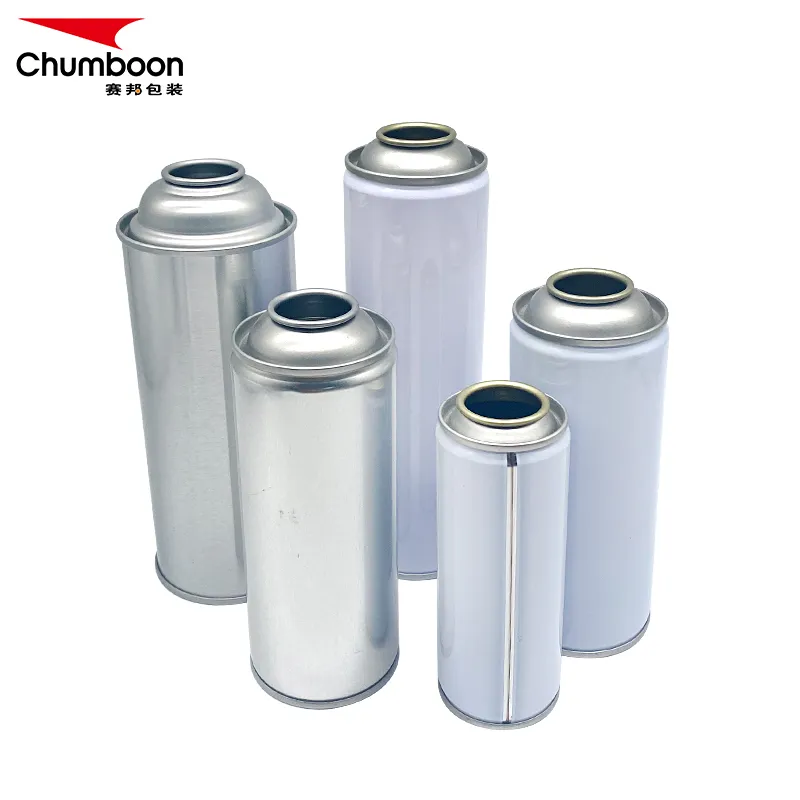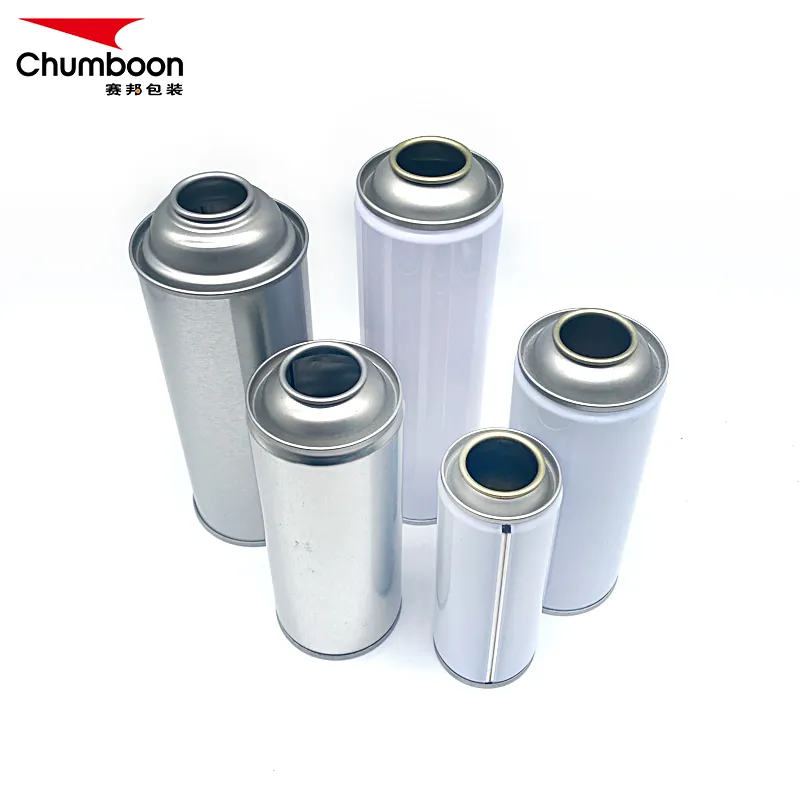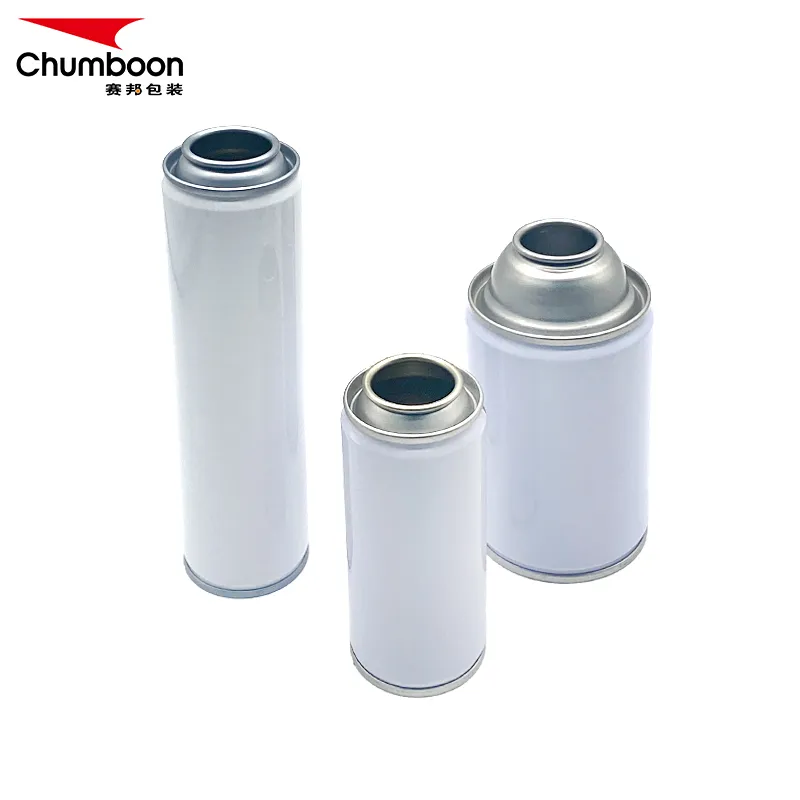As a material widely used in the packaging field, tinplate sheet has unique anti-corrosion properties, processability and environmental protection, making it an important material in the manufacture of packaging containers such as food cans, beverage cans, and cosmetic cans. In recent years, with the increasing popularity of aerosol cans in daily life, the manufacturing materials and processes of aerosol cans have also attracted much attention. So, can tinplate sheet be used to make aerosol cans? The answer is yes. Tinplate sheet can not only be used in the manufacture of aerosol cans, but also plays an important role in the production of aerosol cans.
This article will discuss in detail the feasibility of tinplate sheet as a manufacturing material for aerosol cans and the technical support behind it from multiple aspects such as material properties, process requirements, and the structure and function of aerosol cans.

What is the working principle and basic structure of aerosol cans?
Before discussing whether tinplate sheet is suitable as a manufacturing material for aerosol cans, we need to understand the working principle and basic structure of aerosol cans.
Aerosol cans are a packaging container that can spray out the contents through air pressure. They are widely used in cosmetics, medicines, household cleaners, pesticides and other fields. The core principle of an aerosol can is that the liquid contents inside it are atomized by the high-pressure gas or propellant in the can and then sprayed out from the nozzle. In order to ensure the safety and efficiency of aerosol cans in daily use, its design needs to meet the following key requirements at the same time:
1. High pressure resistance: Aerosol cans are usually filled with high-pressure gas, and the can body needs to have sufficient pressure resistance to prevent rupture or explosion due to excessive internal pressure.
2. Corrosion resistance: The contents loaded in the aerosol can may be corrosive, especially some chemicals or medicines, so the material of the can body needs to have excellent corrosion resistance to prevent the contents from corroding the can body and causing leakage.
3. Sealing: The sealing of the aerosol can must be very strict. Any leakage may cause the volatilization of the gas or liquid in the can, affecting the use effect and even causing danger.
4. Easy to process and shape: The manufacture of aerosol cans usually requires multiple processes, including stamping, welding, coating, etc., so the machinability of the material is also an important factor that must be considered when selecting suitable manufacturing materials.
After understanding the basic structure and working principle of aerosol cans, let's explore how tinplate sheet performs in these requirements and why it can be used as a manufacturing material for aerosol cans.
Compatibility of tinplate sheet's material properties with aerosol can manufacturing
Tinplate sheet is made by coating a layer of tin on the surface of steel to form a protective film to enhance its corrosion resistance. Its main component is low-carbon steel, and the surface is covered with a layer of tin with corrosion-resistant properties, which gives tinplate sheet good durability and protection. As a manufacturing material for aerosol cans, tinplate sheet has significant advantages in the following aspects:
Pressure resistance
Aerosol cans must withstand internal gas pressure, and the strength of the material is crucial. The basis of tinplate sheet is steel, which itself has high strength and rigidity and can withstand large external impacts and internal pressure. Especially in the molding process, after tinplate sheet is processed into a cylindrical or other shaped tank body by deep drawing, stretching, etc., its pressure resistance is further improved, which can effectively resist the high pressure of the gas in the tank.
Anti-corrosion performance
Aerosol cans are often loaded with corrosive chemicals, such as pesticides, detergents, spray paint, etc., which places extremely high demands on the corrosion resistance of the can body. The tin-plated layer on the surface of the tinplate sheet can effectively isolate oxygen and moisture, forming a protective barrier with the steel to prevent corrosion. In addition, during the production process of the aerosol can, an organic coating (such as epoxy resin coating or polyester coating) is usually applied to the inside and outside of the can body to further enhance its corrosion resistance. In particular, the coating treatment on the inner wall of the can body can effectively prevent the contents from directly contacting the tinplate sheet, avoiding chemical reactions that cause the can body to be corroded.
Good sealing performance
Aerosol cans have very high requirements for sealing, and any slight leakage may cause the contents to fail or become dangerous. Through advanced welding processes, such as laser welding or resistance welding, tinplate sheet can form a highly sealed can body structure to ensure that internal gas and liquid will not leak. At the same time, the plasticity of tinplate sheet enables it to be precisely processed into a can mouth and bottom structure that meets the requirements, thereby achieving efficient sealing.
Excellent machinability
Tinplate sheet has good machinability and can be processed into the required shape of aerosol cans through stamping, stretching, bending and other processes. Especially in the deep drawing process, tinplate sheet can be processed into a seamless can body, which is crucial for the manufacture of aerosol cans. Seamless can bodies are not only more beautiful in appearance, but also effectively reduce the possible weaknesses at the welded joints and improve the overall strength and sealing performance of the can body.

Process treatment of tinplate sheet in the manufacturing process of aerosol cans
Although tinplate sheet has excellent corrosion resistance and machinability, it still needs to be subjected to a series of process treatments during the manufacturing process of aerosol cans to ensure that it can be used for a long time in a specific environment. The following are the common tinplate sheet processing processes in the manufacturing process of aerosol cans:
Surface coating treatment
In order to enhance the corrosion resistance and sealing of aerosol cans, tinplate can bodies usually need to be surface coated. The coating on the inner wall of the can is particularly important because the contents in the aerosol can may react with the metal, causing corrosion or deterioration of the contents. Commonly used coating materials include epoxy resin, polyester, etc. These materials can not only isolate the contents and the metal surface, but also improve the wear resistance of the can body.
The application process of the inner wall coating is very delicate, and the coating thickness must be uniform without any damage or bubbles, otherwise it will affect the protective effect of the coating. Usually, the tinplate can body is baked at high temperature after coating to ensure that the coating is fully cured and firmly attached to the metal surface.
Printing and decoration
In addition to the functional coating treatment, the appearance of the tinplate aerosol can usually needs to be printed and decorated. This is not only for beauty, but also for providing product information and brand recognition. The surface of the tinplate sheet is smooth and has good printing adaptability, and high-quality pattern printing can be achieved through offset printing, flexographic printing and other processes. In addition, after printing, the outer surface is usually covered with a layer of transparent protective coating to prevent the pattern from being worn or contaminated during transportation and use.
Welding technology
In the manufacturing process of aerosol cans, the welding quality of the can body directly affects its sealing and pressure resistance. For aerosol cans made of tinplate, resistance welding or laser welding technology is often used. These welding techniques can achieve high-precision seam processing to ensure the strength and sealing of the welds. At the same time, in order to avoid oxidation or corrosion at the welds, the seams are usually coated after welding.
Tank pressure test
Since aerosol cans are subjected to high-pressure gas during use, ensuring the pressure resistance of the tank is a key link in the manufacturing process. On the production line of tinplate sheet aerosol cans, the tanks will undergo rigorous pressure testing, usually using hydraulic or pneumatic testing methods to test the tank's tolerance under different pressures. This test can find possible weak points in the tank during the manufacturing process, thereby preventing the finished product from bursting or leaking during use.

What are the advantages and disadvantages of tinplate aerosol cans?
Advantages of tinplate aerosol cans:
1. High strength and safety: The high strength and pressure resistance of tinplate sheet itself make it an ideal material for manufacturing aerosol cans. Through reasonable design and processing, tinplate sheet aerosol cans can withstand high-pressure gas without breaking.
2. Corrosion resistance: The tin-plated layer on the surface of tinplate sheet plus the coating treatment give the aerosol can excellent corrosion resistance, which can effectively prevent the corrosion of the can body by chemicals or gases in the can.
3. Environmental protection and recyclability: tinplate sheet is a recyclable material with high environmental value. Compared with other materials such as aluminum, the recycling cost of tinplate sheet is lower and the waste of resources is less.
Disadvantages of tinplate aerosol cans:
Although tinplate has many advantages in manufacturing aerosol cans, there are also some challenges in practical applications. For example, tinplate sheet may corrode in certain extreme environments (such as long-term exposure to high humidity or acidic substances), so more stringent coating protection is required. In addition, the production process of aerosol cans requires high material processing accuracy, especially welding and coating processes. A little carelessness may lead to a decrease in the sealing or corrosion resistance of the can body.

